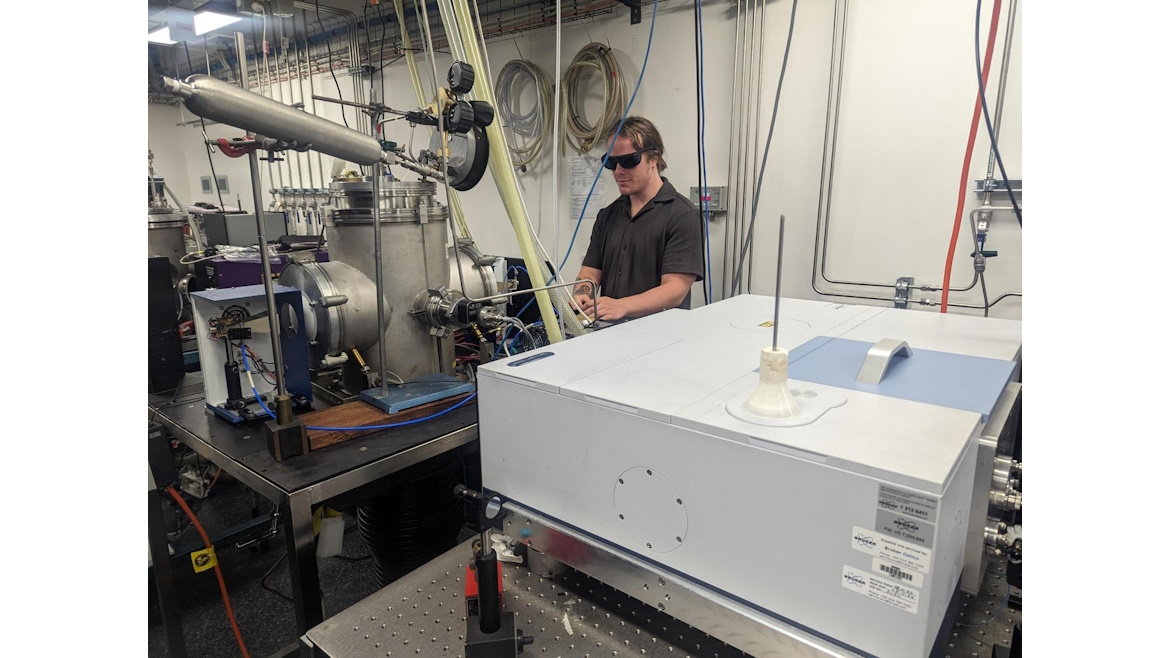A team of scientists at the University of New South Wales (UNSW) in Sydney, Australia, has discovered that some of the most important new refrigerants break down, in part, into persistent greenhouse gas pollutants, including compounds that have been banned internationally. Refrigerants are chemicals that turn from a liquid to a gas – and vice-versa – and transfer heat in the process, that are used for refrigeration and indoor heating and cooling. The chemicals are also used as aerosol propellants, fire retardants and in the manufacture of foamed plastics.
Hydrofluoroolefins (HFOs), which react rapidly in the lower atmosphere, have emerged as the lead synthetic chemical for refrigerants, and are considered a more environmentally friendly alternative to their chemical predecessors. While it’s known that HFOs decompose into chemicals like trifluoroacetaldehyde, there has been persistent discussion about whether this compound further breaks down into fluoroform – the most environmentally damaging HFC they were used to replace.
A paper, led by Dr. Christopher Hansen from UNSW Chemistry and published in the Journal of the American Chemical Society, has demonstrated that HFOs do break down into a small amount of fluoroform. This new research suggests we need to more closely examine HFOs’ environmental impact, raising questions about their long-term safety.
“We don’t fully understand the environmental impacts of HFOs at this point,” says Dr. Hansen. “But, unlike previous examples such as the CFCs and leaded petrol, we are trying to figure out the consequences of large-scale emission before we’ve potentially harmed the environment and human health in an irreversible way. We’re trying to try to change the way that science introduces new products.”
The Story So Far
The hole in the ozone layer is a result of human activities that have released ozone-depleting chemicals, including CFCs – some of the first synthetic chemicals used as refrigerants and in aerosol cans. Thanks to The Montreal Protocol, society began phasing these out internationally, and they were largely replaced with HFCs, which were used on a global scale from the mid-1990s.
Although HFCs don’t cause any ozone layer depletion, they turned out to be potent greenhouse gases. “In the end, scientists discovered that 1kg of fluoroform – a once commonly used HFC – emitted today will contribute to as much to surface heating of the planet over the next century as more than 14,000kg of carbon dioxide,” says Dr. Hansen.
After realizing the extreme greenhouse warming potential of HFCs, their global phaseout began in 2016. HFOs, which have a shorter atmospheric lifetime, are now the leading synthetic replacements and are rapidly proliferating as refrigerants, foam-blowing agents, and aerosol propellants. While scientists know some information about the chemical pathways of HFO decomposition, there has been a long-standing debate about whether they actually break down into some of the most environmentally unfriendly HFCs.
Difficult Experiments
HFOs are made up of chemical units that are more reactive than their previous counterparts, so they don’t rise to the upper atmosphere and become long-lived greenhouse gases. “But as chemists, we look at the structures of these molecules, and we start to try and imagine what they are turned into,” said Dr. Hansen. “So rather than just go, oh, this thing only has a lifetime of two weeks, it can’t be a greenhouse gas, we must see what it’s turned into. And most chemists will look at these structures, and they can draw reactions that actually lead to HFCs.”
However, confirming whether HFOs break down into HFCs in low yields requires difficult experiments, and most existing techniques and instruments lack the sensitivity and specificity to do so. Dr. Hansen and his team used multiple techniques, including two invented just for this study, to measure and evaluate the chemical reaction across the full range of pressures expected in the atmosphere.
“We used a variety of spectroscopic techniques to observe the reaction. And we made up a gas mixture at various pressures to simulate an atmosphere polluted with a trace amount of the immediate HFO decomposition product. Then we used a laser to simulate the photons that would otherwise come from the sun, to drive the reaction,” said Dr. Hansen.
Climate Models
We know that HFOs decompose into fluorinated carbonyls such as trifluoroacetaldehyde at a yield up to, or greater than, 100%. This means all the molecules of HFO turn into the first product and, for some HFOs, you might get two molecules of that product for each molecule of HFO that breaks down. This study reveals that the next step of the reaction, driven by light, produces a small amount of fluoroform from the decomposition of trifluoroacetaldehyde. Fluoroform is the HFC with the greatest global warming potential.
“We have demonstrated comprehensively that some of the most important HFOs do break down into HFCs and have provided the first hard scientific data needed to model and predict the consequences of large-scale emission,” said Dr. Hansen. “Although the reaction only produces a small amount of fluoroform, the chemical can exist in the atmosphere for up to 200 years, and with a GWP more than 14,000 times greater than CO2, a small yield can still have a significant impact.”
Many atmospheric crises have caught us by surprise. “Think leaded petrol, lethal smog events of the 20th century, the ozone hole crisis,” said Dr. Hansen. “But this wasn’t because our models were not good enough, but rather because the important chemistry was missing from the models.”
Now, this study settles a long-standing controversy and provides the hard, scientific data needed to model and predict the impact of large-scale emission of HFOs, before policymakers may need to react to an emerging environmental crisis. Climate modeling groups at UNSW, as well as scientists around the world, are now ready to input this data into models, to help work out the environmental impact of continuing to use HFOs.
“Although questions remain, this paper offers crucial evidence that should inform the next steps in addressing the environmental impact of the chemicals we release into the atmosphere,” said Dr. Hansen.
Dr. Hansen and his team are planning further novel experimental work. “For this paper, we performed the experiments at a single wavelength, the wavelength used in studies that are presently guiding regulators, industry, and governments,” he said. “We plan to study this chemistry using other wavelengths of light, where the yield could be higher or lower.”
This content was republished with permission.
Whether you require installation, repair, or maintenance, our technicians will assist you with top-quality service at any time of the day or night. Take comfort in knowing your indoor air quality is the best it can be with MOE heating & cooling services Ontario's solution for heating, air conditioning, and ventilation that’s cooler than the rest.
Contact us to schedule a visit. Our qualified team of technicians, are always ready to help you and guide you for heating and cooling issues. Weather you want to replace an old furnace or install a brand new air conditioner, we are here to help you. Our main office is at Kitchener but we can service most of Ontario's cities
Source link



